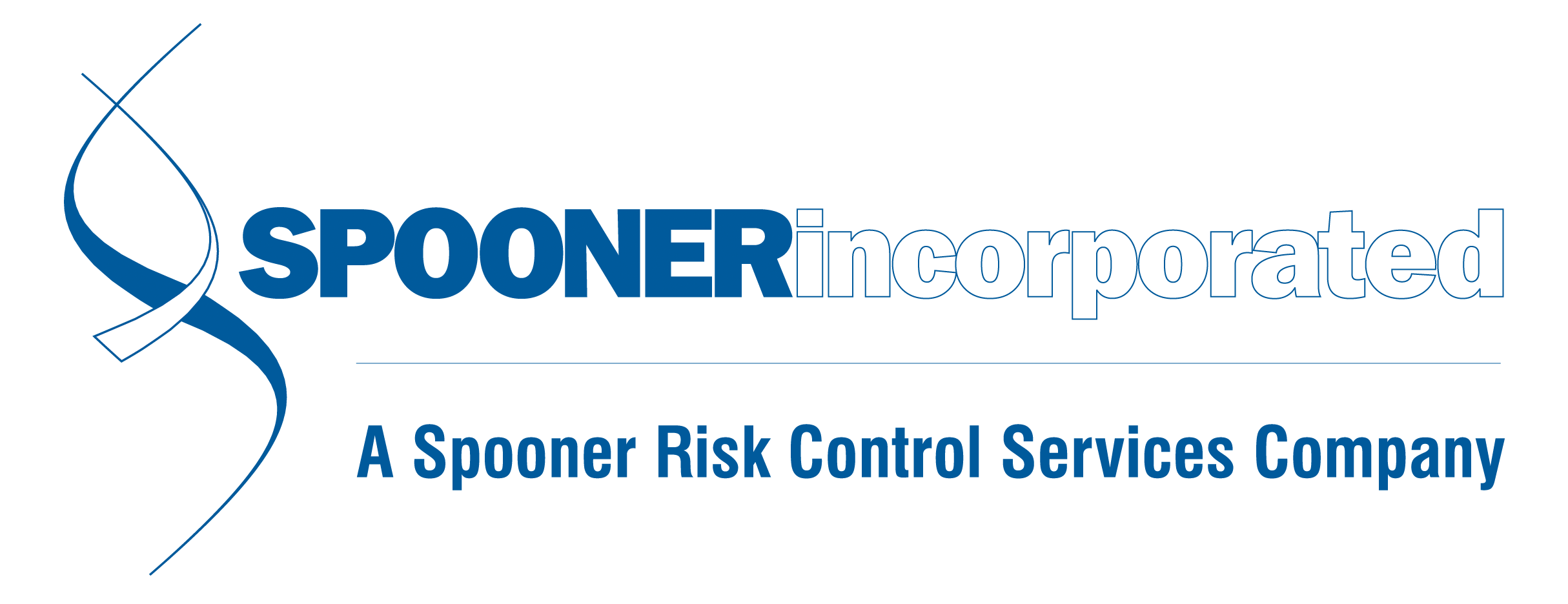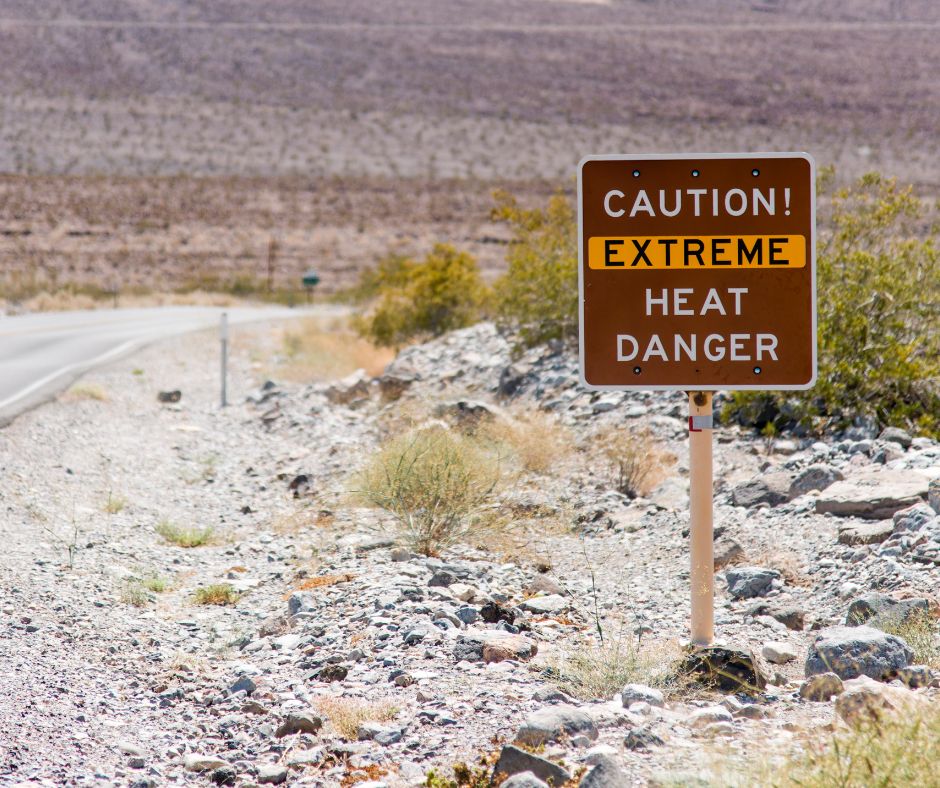Posted By Brandy King
January 17, 2024
Category: OSHA, Electronic Recordkeeping, Form 301, Form 300, OSHA 300A, Safety, Incident Reporting, Compliance
It’s time to post and electronically submit your OSHA logs - and this year, submission requirements will impact far more U.S. employers. We discussed this in detail when the rule was finalized in July 2023. Effective January 1, 2024, OSHA will require employers with over 100 employees in certain high hazard industries to complete electronic records submissions of Forms 300 and 301, in addition to Form 300A. These are records that covered employers should already be keeping, but previously have not been required to submit. The impacted industries include (but aren’t limited to) retail, wholesale, performing arts, manufacturing, farming, and grocers. Our safety team agrees that the fastest, easiest way to find out your company’s submission requirements is to use this ITA Coverage Application. Enter your company’s NAICS code and employee count, and it will confirm which logs should be submitted. As a general guide:
20-249 employees and on this list must submit 300A
100 or more employees and on this list must submit the 300A, 301 and 300 log.
Employee count is “per establishment,” not entire corporation size. So, what is OSHA’s definition of an “establishment?”
An establishment is a single physical location where business is conducted, or where services or industrial operations are performed. For activities where employees do not work at a single physical location - such as construction, transportation, communication
Posted By Brandy King
November 27, 2023
Category: NLRB, NLRA, OSHA, Compliance, Regulatory Agencies, Safety
The National Labor Relations Board (NLRB) announced on October 31, 2023 that they’ll be strengthening their partnership with OSHA on referrals, sharing information, training, and outreach. The Memorandum of Understanding allows OSHA and NLRB to work together more efficiently to enforce labor laws and protect the rights of workers.
Assistant Secretary for OSHA Doug Parker stated, "Everyone should be able to exercise their legal rights in the workplace without fear of losing their job or other forms of punishment.” He noted that the partnership will expand the capacity of both agencies to protect workers raising concerns about workplace violations or retaliatory activity.
This arrangement is likely to increase overall understanding of workers’ rights under federal anti-retaliation and whistleblower protection laws. The two organizations have built a fact sheet to help workers understand their rights and what recourse they have and what recourse they have if those rights are infringed upon. You can find that fact sheet here.
It shouldn’t be news to employers that you can’t (and shouldn’t) retaliate against employees for exercising their rights when it comes to workplace safety. If you don’t already have this poster alongside all of your other required communications to employees, you can order one for free here. We’re sharing the news of this partnership because it stands to amplify the already aggressive stan
Posted By Brandy King
August 25, 2023
Category: osha, osha NEP, workplace safety, forklift operator, warehpuse, distro, amazon dsp, courier service, parcel service
In July, OSHA announced the beginning of a three-year National Emphasis Program (NEP) focused on the warehousing industry. The NEP will also encompass mail and parcel processing, local delivery services, and high-risk retail workplaces. Assistant Secretary of Labor Doug Parker said in a statement that OSHA’s enforcement efforts are “designed to do one thing: lead to permanent change in workplace safety.” The agency will select establishments (based on criteria outlined in the NEP) for in-depth safety inspections that zoom in on the aspects of material handling, means of egress, powered industrial truck operations, fire protection and walking/working surfaces. The inspected establishments will be chosen from both companies with industry codes encompassed in the program, as well as retail establishments with high injury rates, especially those resulting in lost work days (high DART rates).
The number of U.S. employees in the warehousing and distribution center industries has more than doubled in the last ten years, accounting for nearly two million workers across the country. A lot of that growth can be attributed to things like rising consumer demand along with Amazon’s continued growth (which was meteoric during COVID). COVID caused a surge in consumers preferring goods to be dropped at their door, which drastically increased the numbers of not only first-leg drivers, but “last-mile” drivers
Posted By Brandy King
July 21, 2023
Category: Safety Consulting, Osha, Osha Compliance, Osha Inspections, Informal Conference, Citations, Loto, Safety Training
Things aren't slowing down at OSHA. If you feel like they've been mentioned in the news a lot lately, that's because they're keeping very busy. Workplace safety enforcement has added significant manpower and has been much more active than in previous years. Inspections have increased in number, as well as in breadth and depth, which is why it’s a great time to give your company a safety tune-up. There have been plenty of other regulatory distractions for management teams in 2023, which may have led to a reduction in attention to detail with required safety compliance programs. Pair that with the current OSHA administrator's aggressive background as the chief of Cal-OSHA, and your company should have a renewed desire to review OSHA compliance matters. This should include all of your written programs, as well as sub-elements under those programs.
When is the last time you updated your health & safety written programs?
When is the last time you checked to ensure all of your training is up to date and documented?
When is the last time you completed a safety walk-through of your facility, with corrective action taken for any identified discrepancies?
What are your compliance weaknesses? (Maybe you're not even sure)
What are the underlying safety deficiencies contributing to your workplace injuries, leaving you vulnerable to OSHA penalties, and what are you doing to correct those issues?
These a
Posted By Brandy King
June 14, 2023
Category: osha, mandate, heat illness, heat stroke, safety, inspections, NEP, heat stress
Let’s not forget that OSHA’s Heat Illness Nation Emphasis Program (NEP) is still going strong. On days that the National Weather Service issues a heat warning or advisory for certain areas, expect OSHA to be making rounds and doing inspections in 70+ indoor and outdoor industry settings that are considered high risk for heat illness.
A study was recently published in International Journal of Environmental Research and Public Health using data reported to OSHA. The research team found that 3% of all injuries and fatalities were exertion related – and of those, a staggering 89% were heat-related. Unsurprisingly, industries associated with outdoor work like construction, agriculture, and farming show heat as being a significant occupational danger – but the stats are also high for assembly line workers. Even today, many indoor industrial environments like warehousing, and production and assembly lines, don’t have A/C throughout their entire facility. Office areas will typically be cooled - but where most of the workers are concentrated, they rely on large ceiling fans, air circulation provided by open windows and loading docks, as well as personal cooling devices brought by the employees themselves.
Much like work-related falls, heat illnesses are preventable. As an employer, you have a responsibility to provide rest, water, and shade to employees, allow new workers to acclimate to the heat in short bursts, monitor staff for signs of
Posted By Brandy King
March 27, 2023
Category: Ohio Bwc, Workers' Comp, Safety, Catastrophic Claim, Public Relations, Osha
We’ve been collecting testimonials from a few clients lately, and one of them spoke about how our safety team responded to a stressful situation in a way that gave him a lot less to worry about.
HR Associates Personnel Service in Piqua, Ohio began working with Spooner as their TPA over ten years ago. Soon after our partnership began, an employee tragically suffered a heart attack while driving a forklift - and right away, Spooner sprang into action. We provided an investigation, followed by a comprehensive study with photos of the worksite. Steve Risner, Vice President of HR Associates, told us that “having piece-of-mind on that day spoke volumes about the integrity of Spooner’s team.”
When catastrophic events happen in the workplace, management shifts into high gear to respond. Incidents like amputations, forklift accidents, fatalities, and personal illnesses that manifest at work are examples of catastrophic events that could lead to OSHA and VSSR issues. Spooner’s safety professionals can support your management team in these crisis situations by conducting thorough incident investigations to identify the root cause, and creating plans for preventive actions going forward. Catastrophic events require a swift and proactive response, so we urge you to contact us as soon as these events occur, so we can provide best
Posted By Brandy King
February 20, 2023
Category: Osha, Osha Compliance, Fairfax Memo, Combustible Dust Nep,
Secretary of Labor Marty Walsh announced his resignation in early February. At the time of the update, he has not actually stepped down and ideas are being tossed around about his potential replacement. Deputy Secretary of Labor Julie Su is expected to take over as acting secretary, which presents the possibility that she could be our next Secretary of Labor. Regardless of who fills the shoes, OSHA field offices and inspectors will stay busy (see below) – which means employers need to stay diligent.
Expansion of combustible dust NEP – This National Emphasis program has now been expanded to the following industries:
311812 – Commercial Bakeries
325910 – Printing Ink Manufacturing
321912 – Cut Stock, Resawing Lumber, and Planning
316110 – Leather and Hide Tanning and Finishing
321214 – Truss Manufacturing
424510 – Grain and Field Bean Merchant Wholesalers
The NEP was revised after enforcement reports indicated that wood and food products made up over half of the materials involved in combustible dust fires and explosions.
Instance-by-Instance Citations – Also in February, OSHA announced a change in how they may handle enforcement to discourage non-compliance. Instead of grouping citations, Regional Administrators and Area Directors can use their authority to cite each instance of non-compliance separately. These will theoretically be reserved for “high gravity,” serious, and repeated viol
Posted By Brandy King
January 19, 2023
Category: OSHA, Safety, Slips Trips Falls, Workplace Injury, Walking Working Surfaces, Soft Tissue Injury, Ohio Workers' Comp
Slips, trips, and falls continue to be a leading cause of emergency room visits for many workers in the state of Ohio, and nationwide. Some common slip, trip, and fall injuries include:
• Fractured Bones
• Lacerations
• Strains/Sprains
• Back injury
• Head injury/brain trauma
Causes of Slips, Trips, and Falls
Some common causes of these injuries include:
• Wet or oily surfaces
• Weather hazards including rain, snow, and ice
• Loose mats and rugs
• Walking surfaces that are not level
• Obstructed views
• Poor lighting
• Clutter
• Uncovered wires and cables
Preventing Slips, Trips, and Falls
There are several ways that employers can help prevent these types of incidents and keep worksites safer. The simplest way is to practice good housekeeping throughout your facility. Other options include wearing slip-resistant shoes, using caution when walking on uneven surfaces, as well as surfaces that may be slippery or wet.
Good Housekeeping Tips
Good workplace housekeeping is an easy way to prevent most slips, trips, and falls, and it’s often overlooked. Simply cleaning up your work area as you go can help on the job site. Examples of good housekeeping
Posted By Brandy King
December 08, 2022
Category: osha, regulations, 2022 osha review, heat illness standard, regional emphasis programs, hearing conservation, ITA reporting
OSHA was very well-funded and staffed throughout 2022, and they kept themselves busy. There were plenty of Regional Emphasis Programs (REPs) in region 5 (which includes Ohio), including grain handling, demolition, powered industrial vehicles, tank cleaning operations, and hearing conservation – plus a National Regional Emphasis program on Heat Illness.
While many businesses had largely forgotten about COVID protocols and safety measures by 2022, certain sectors of the healthcare industry were still under the agency’s microscope this year. The measures aimed at healthcare employers are “advisory” in nature, not considered standards or regulations. Still, OSHA did renew their focus on inspecting healthcare facilities from March through June 2022. The short-term initiative was directed at healthcare facilities that treat or handle COVID-19 patients, like hospitals and skilled nursing facilities. With surges still occurring, we could see more of these focused inspections in 2023.
A number of National Emphasis programs were also issued, including one for Heat Illness. This issue has become a top priority over the last few years, due to climate change creating unbearably hot conditions for both indoor and outdoor workers. OSHA published an Advance Notice of Proposed Rulemaking back in October 2021, with an extended comment period through late January 2022. In simpler terms, they’re indicating that a standard is being considered and took the
Posted By Brandy King
November 14, 2022
Category: Respiratory Protection, Respirator Fit Testing, Written OSHA Programs, Osha, PFT, Occupational Health, 1910.134
If your workplace exceeds the permissible exposure limits of airborne contaminants (more on that here), there are a few items you should have in place, starting with a written respiratory protection program. If this isn’t something your own safety staff is comfortable putting together, you can outsource it to a third party. Spooner’s safety team is well-versed in helping develop these types of programs to help businesses remain compliant. Once the written program is finalized, you’ll need to select the appropriate respirator based on the type of exposure. After both of those tasks are complete, it’s time to schedule respirator fit testing.
Even though a pulmonary function test (PFT) is not always required by OSHA prior to wearing a respirator on the job, the medical provider performing the certification may require a PFT as part of the process. A PFT is required for employees wearing respirators for protection from asbestos, cotton dust, benzene, formaldehyde, silica and beryllium, to name a few.
Any employee planning on wearing a respirator at work will need to complete OSHA’s Respirator Questionnaire. Simply asking your employees to complete one prior to wearing a respirator isn’t sufficient - OSHA requires that a physician [or other licensed health care professional (PLHCP)] to review the questionnaire. How the form is completed is determined by the type of respirator worn, and certain responses may serve as a red flag that additio
Posted By Brandy King
October 13, 2022
Category: Safety, Safety Software, OSHA, Gap Analysis, Accident Reporting
Since Spooner is involved in the safety programs of several of our client employers, we encourage clients to find a method of tracking data that works for them. If we’re not learning from historical trends and using available data to prevent future incidents, then why record it all (aside from OSHA, of course)? When a decision maker at one of our clients moves on to a new opportunity, they often bring Spooner with them. Many of them go on a similar role elsewhere, but sometimes they move on to become innovators and create solutions that we think would be valuable to our clients.
The Spooner team had the pleasure of working with Valerie Morris as Vice President of Safety & Risk Management at both Aetna Integrated Services and Atalian Global Services. Following her time there, she worked with colleague Chris Bellamy to design a safety software that would meet all of the needs of safety professionals. The Building Effective Safety Teams (B.E.S.T.) ™ Program includes key elements like training capabilities, gap analysis, recordkeeping and customization options. Like most software intended for company-wide use, different administrator levels can be assigned to ensure sensitive data remains private.
The B.E.S.T. Program was designed to help build cultural change in the way safety is viewed within your organization. It allows team members at all levels to engage in risk management, and puts everyone on the same page in terms of expectations and safety culture.
Posted By Brandy King
October 13, 2022
Category: Occupational Health, Occupational Safety, National Fire Safety, Workplace Safety, Fire Prevention, OSHA
Did you know that October is National Fire Safety month? This is a great time for businesses to revisit their workplace fire safety plans, as well as any other Emergency Action Plans. Based on data from the Bureau of Labor Statistics, over 125 deaths occur on average each year from workplace fires – many of which can be prevented from regular reviews, maintenance and inspections. Minimizing workplace fire hazards is the first step in preventing fires – so how do you recognize these issues?
Report any electrical hazard you see, such as faulty or bad wiring. Frayed or damaged electrical cords, as well as damaged electrical outlets/receptacles are a common reason for fires to start.
Ensure that flammables are stored properly. If your company uses or facilitates flammables, they must be stored in a flammables cabinet, and inspected regularly.
Regularly inspect fire-prone areas like employee break rooms, electrical storage or server rooms, and laboratories/areas where flammables or chemicals are stored.
Reviewing your emergency plans, exit routes, and drills to look for “holes” in your system or plans.
Properly maintaining your fire suppression system, extinguishers, and providing employee training on fire safety.
Most offices or workplaces utilize ABC fire extinguishers, which can extinguish ordinary combustibles, flammable liquids, and energized electrical equipment. Knowing how to properly use fire extinguishers is important, following
Posted By Brandy King
May 20, 2022
Category: OSHA, Regional Emphasis Program, Osha Region 5, Audiometric Testing, Baseline Audiogram, Hearing Conservation, Occupational Noise
We’ve been talking a lot lately about OSHA’s Hearing Conservation Program, mostly due to the influx of Regional Emphasis Programs we’ve seen involving it lately. The program involves more than just noise sampling and providing hearing protection – there’s also a medical component.
When an employer determines they need to participate in the conservation program, one of the first steps to take is finding a healthcare provider that can perform audiograms, or audiometric testing. A “baseline” or initial test will need to be performed on affected employees. This provides a starting point that future audiograms can be compared to, and will show if the employee is experiencing any changes in their hearing abilities. Baseline testing must be performed within six months of an employee’s initial exposure to sound levels exceeding 85 decibels (dB) over an 8 hour time-weighted average (TWA). Exceptions can be made on the time frame for the baselines if the employer utilizes a mobile testing unit. For baseline and annual testing, the worker should not be exposed to workplace noise for 14 hours prior to the audiogram.
Employees’ annual audiograms should always be completed within one year of the baseline or previous year’s test. Employers should compare the annual test results to the baseline results to determine if the employee has lost hearing ability or experienced a standard threshold shift (STS). Not ev
Posted By Brandy King
April 20, 2022
Category: Osha, Mandate, Heat Illness, Heat Stroke, Safety, Inspections, NEP,
There’s no shortage of OSHA emphasis programs lately, and now they’re giving you another thing to worry about. Earlier this week, the Department of Labor announced that OSHA has launched a new National Emphasis Program (NEP) to protect workers from both indoor and outdoor heat hazards. They’ll be conducting heat-related workplace inspections to get ahead of avoidable injuries, illness – or in some cases, fatalities.
DoL Secretary Marty Walsh made the announcement at an event in Philadelphia on April 12, with the initiative already having been made effective on April 8. The plan is to encourage employers to take proactive steps to avoid illness and death for workers that are exposed to high heat conditions. The average number of deaths caused by heat-related illness has doubled since the 1990s. Employers who operate outdoors regularly are typically aware of these risks, but companies where most employees work indoors haven’t considered themselves at risk of answering to OSHA on this. Many large manufacturers are still operating with no air conditioning in their factories, and may only be providing bits and pieces of what employees need to stay safe in these stifling environments.
The program will involve OSHA inspecting indoor and outdoor employer sites across 70+ high-risk industries, specifically in areas where an official heat warning or advisory has been issued. If it’s 804° F or higher, inspectors and com
Posted By Brandy King
April 14, 2022
Category: Osha, Hearing Conservation, Audio, Audiograms, Noise Monitoring, Hearing Protection, Decibel Level, OSHA PEL, OSHA REP
We mentioned back in August that OSHA’s Region 5 would begin a Regional Emphasis Program (REP) on Exposure to Noise Hazards in the Workplace. This brings up a question that our safety team hears often – how loud is too loud?
The most common answer you’ll hear is between 85 and 90 decibels (dB). That’s roughly the same level of noise you’d be exposed to while operating a lawn mower. Although this is OSHA’s action limit and PEL (permissible exposure limit), there’s still more to think about. If you need to raise your voice to speak to someone three feet away, or employees voice concerns about trouble hearing or ringing in the ears - noise levels might be over 85 dB. The occupational noise exposure standard requires that all employees exposed to noise levels 85+ dB on an 8-hour shift (TWA, or time weighted average) must be included in a hearing conservation program.
The CDC estimates that 22 million workers are exposed to potentially damaging noise at work each year. Whether you work at a sports venue, on a tarmac, or operate a jackhammer—hearing loss is preventable. Hearing conservation programs strive to prevent initial occupational hearing loss, preserve and protect remaining hearing, and equip workers with the knowledge and hearing protection devices necessary to safeguard themselves. A good first step is having a noise s
Posted By Brandy King
March 10, 2022
Category: OSHA, OSHA Inspections, Focused Inspection Initiative, COVID 19, Patient Care, Nursing Homes, Hospitals, HAL, UPA, RRI
There’s certainly been no shortage of OSHA news recently, and their most recent push is aimed at the healthcare industry. From March 9, 2022 through June 9, 2022, OSHA will begin a focused, short-term inspection initiative directed at both hospitals and skilled nursing facilities that treat or handle COVID-19 patients. The goal is to mitigate the spread of SARS-CoV-2 and all of its variants, and ensure the overall health and safety of healthcare workers who are at a higher risk of being exposed to the virus in the workplace. The initiative will supplement OSHA’s existing targeted enforcement under the National Emphasis Program (NEP) for COVID-19.
OSHA will use these partial-scope inspections to gauge employer compliance efforts as well as readiness for future COVID surges. These specific inspections will also make up 15% of OSHA’s inspections in each region during the three-month period.
If your business falls under the following NAICS codes:
622110 General Medical and Surgical Hospitals (NCCI Codes 8833, 9040)
622210 Psychiatric and Substance Abuse Hospitals (NCCI Codes 8833, 9040)
623110 Nursing Care Facilities/Skilled Nursing Facilities (NCCI Codes 8824, 8826)
623312 Assisted Living Facilities for the Elderly (NCCI Codes 8824, 8826)
And also meets any of these criteria:
Follow-up inspection of any prior inspection where a COVID-19-related citation or hazard alert letter (HAL) was issued;
Follow-up or monitoring inspections
Posted By Brandy King
March 07, 2022
Category: Safety, Osha, Osha Inspections, Osha Sst, Informal Conference, Osha Abatement, Site Specific Targeting, Osha 300a, Recordkeeping, Investigations, Safety Services
The Site-Specific Targeting (SST) plan is OSHA’s main site-specific programmed inspection initiative for non-construction workplaces that have 20 or more employees. OSHA will generate inspection lists based on elevated Days Away, Restricted, or Transferred (DART) rates for 2019, and sites with upward trending rates for the three-year range of 2017-2019. They will also identify a random sample of establishments that did not provide them the required 2017, 2018, and 2019 Form 300A data. To verify data accuracy and quality control, OSHA also intends to include a random sample of low-rate establishments from the 2019 data.
1. High-Rate Establishments
The SST plan selects individual establishments for inspection based on 2019 Form 300A data. Since average DART rates vary widely among industries, OSHA will set one DART rate for manufacturing and a different DART rate for non-manufacturing as objective selection criteria.
2. Upward Trending Establishments
OSHA will identify establishments with rates above their industry’s national average in 2017 that have continued to trend upward in both 2018 and 2019 and continue to remain above their industry’s national average.
3. Low-Rate Establishments
To verify the reliability of the Form 300A data reported to OSHA, the agency will generate a random sample of establishments with low DART rates using the 2019
Posted By Brandy King
March 07, 2022
Category: Spooner Safety Seminars, Safety, Safety Training, Osha, BWC Training, HR CE, HR Continuing Education, Training Credits, Recordkeeping
ATTENTION Group and Group Retro Clients: Spooner Safety Seminars are back on the road! Following a lengthy hiatus, our team is eager to get back on the road educating employers and helping you fulfill your required training credits with BWC. See below to find out when our team will be in your area and get signed up before the March 29 registration deadline.
Cleveland Area: April 5th 2022, 10 AM – 12 PM @ Holiday Inn, 6001 Rockside Rd, Independence, OH 44131 ***This session has reached capacity. If you need help locating another 2 hour session in your region, please reach out to our safety team!***
Dayton/Cincinnati Area: April 6th 2022, 10 AM – 12 PM @ Hilton Garden Inn South-Austin Landing, 12000 Innovation Dr, Miamisburg, OH 45342
Columbus Area: April 6th 2022, 3 PM – 5 PM @ Embassy Suites, 5100 Upper Metro Place, Dublin, OH 43017
Youngstown Area: April 7th 2022, 10 AM – 12 PM @ A La Cart Catering, 429 Lisbon St, Canfield, OH 44406
To register online, click here.
NOTE: Registration deadline is Tues 3/29/22, 11:59 PM
All employers are welcome to attend these informative workplace safety seminars. The training sessions will satisfy BWC’s 2-hour safety training requirement for companies in Group Rating or Group Retrospective Rating for the 2021 policy year, and are approved for continuing education credits for those with HR credentials.
The attendance fee is $35.00/person – this will be invoiced after your attenda
Posted By Brandy King
January 21, 2022
Category: OSHA, OSHA 300A, OSHA Injury Reporting, OSHA ITA, OSHA Compliance, Safety, Injury Reporting, Recordable, Reportable, Workplace Safety, DOL
It’s time for employers to submit and post their OSHA 300A. Here are some pointers to guide you through the process. More resources can be found on OSHA.gov.
Electronic Submission:
Go to https://www.osha.gov/injuryreporting/
Click the red “Launch injury tracking application” button on right and follow the instructions
Details:
Who - Establishments with 250 or more employees that are currently required to keep OSHA injury and illness records, and establishments with 20-249 employees that are classified in certain industries with historically high rates of occupational injuries and/or illnesses. Visit the OSHA website for list of “certain industries”.
What - Covered establishments must electronically submit information from their OSHA Form 300A.
When - In 2022, covered establishments must submit information from their completed 2021 Form 300A by March 2.
How – OSHA provides a secure website that offers three options for data submission. First, users can manually enter data into a web form. Second, users can upload a CSV file to process multiple establishments at the same time. Last, users of automated recordkeeping systems will have the ability to transmit data electronically via an API (application programming interface).
View the CSV instructions
Download a CSV file template
Download a CSV sample file
View the API technical
Posted By Brandy King
January 21, 2022
Category: WFH, Working From Home, Teleworking, Remote Work, Remote Worker Safety, Home Office Safety, Ergonomics, OSHA, Workers' Compensation, Protecting Teleworkers
We all know that workplace safety is important – but not much thought is given to those who have moved to teleworking during the COVID-19 pandemic. Many companies have found that moving to teleworking worked so well for them, that they have not insisted on people returning to the office full time.
You can’t realistically go to every employee’s home and inspect their home office set up, but you can provide some helpful guidelines that should reduce the likelihood of work-related injuries at home.
• Seated desks should be about 29” high. For standing desks, use elbows as a guide for desk height, as it varies from person to person.
• The top of your monitor should be at eye level, and about 20-25” from your face.
• Try positioning yourself in an area of neutral natural light. A window behind the worker will create a glare on the screen, and a window behind their monitors can make the screen equally difficult to read – and both can lead to eye strain and headaches.
• Chances are they don’t have a proper (ergonomically correct) desk chair at home, so they should be able to rest their back against the chair back and their feet on the floor. The employer can choose to provide ergonomic supports for any shortcomings, but the employee can usually do this at home with a phone book under the feet or a rolled t













